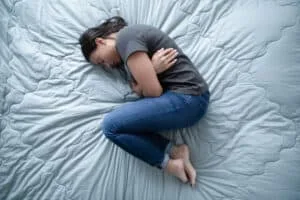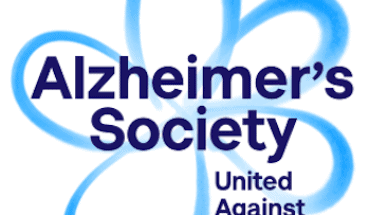Navigating Teen Seasonal Depression: Insights into Symptoms, Treatment, and Support”: Teenagers face unique challenges, and seasonal depression can add an additional layer of complexity to their emotional well-being.
This blog post aims to explore the world of seasonal depression, specifically focusing on how it impacts teens. From recognizing symptoms to providing guidance on seeking professional help, we’ll navigate the journey of teen depression in the context of seasonal affective disorder (SAD) and related conditions.
What is Seasonal Depression: Beyond the Winter Blues
Understanding the nuances of seasonal teen depression is crucial for everyone involved in your teen’s life. This section will explore into the definition of teen seasonal depression and highlight the specific signs that parents and guardians should be aware of.
Seasonal Affective Disorder (SAD) in adolescents, is a form of major depression that manifests cyclically, typically during specific seasons (characteristically as summer depression or winter depression). Unlike regular mood fluctuations associated with adolescence, SAD in teens is characterized by recurring at about the same times every year, impacting their overall well-being.
Seasonal Affective Disorder (SAD): Symptoms in Teens
Teens often express their struggles differently than adults. The unique symptoms of adolescent depression, such as changes in sleep patterns, extreme sensitivity, and troublesome behaviors are particularly telling risk factors. Recognizing these signs early on is essential for providing timely support.
Changes in Mood and Energy Levels
Depressed teens may exhibit noticeable shifts in mood, energy levels, and overall self esteem. Parents should be attentive to abrupt changes in their teenager’s usual behavior, particularly in late fall and early winter. If your teen’s overall disposition seems to improve in the spring and summer months, particularly early summer, the depression symptoms may actually be SAD symptoms.
Changes in Sleep Patterns
Trouble sleeping, such as difficulty falling asleep or oversleeping, can be indicative of teen seasonal depression. Parents should pay attention to any significant deviations from your teen’s regular sleep routine and make their primary care physician aware as well.
As a result of poor sleep and low energy levels, your teen may experience weight gain, an increase in negative thinking, and low self esteem.
Withdrawal and Isolation
Teens struggling with seasonal depression may withdraw from social activities and isolate themselves. A sudden disinterest in hobbies or spending time with friends could be a red flag for SAD, substance abuse, or other mental health conditions. Seek help from a mental healthcare provider for any stark changes in your teen’s social life.
Decline in Academic Performance
Seasonal depression can impact cognitive functions, leading to a decline in academic performance. Due to the interplay between symptoms when SAD begins, your depressed teen may experience trouble concentrating or staying awake in class, which can greatly affect their academic performance.
Parents and educators should be alert to any unexplained drops in grades or changes in study habits and alert the school counselor, when needed.
Feelings of Hopelessness
Adolescents experiencing seasonal depression may express feelings of hopelessness or despair. Verbalizing thoughts about life being too overwhelming or expressing a desire to escape are concerning signs and should be addressed immediately with a mental healthcare provider.
Seek Immediate Help for Suicidal Thoughts
Acknowledging the heightened risk of suicidal thoughts among depressed teens is crucial for fostering a proactive and supportive approach.
In moments of crisis, immediate help is imperative. Obtaining information on a local crisis lifeline and emergency resources is essential, offering teens accessible avenues to reach out for assistance.
Emphasizing the importance of immediate intervention and communication is paramount for those grappling with suicidal thoughts.
Encouraging teens to connect with professionals, friends, or family members can be a lifeline in times of distress, reinforcing the message that help is available and that their well-being matters. By promoting awareness of crisis resources and the significance of swift action, we can contribute to creating a safety net for teens facing such challenging circumstances and prevent suicide attempts before they happen.
Teen Mental Illnesses & Their Relationship to SAD
Teenagers often grapple with a myriad of mental health challenges, and understanding the intricate relationships between seasonal depression and other prevalent conditions is crucial. This section will explore into the interconnectedness of teen seasonal depression with common mental illnesses such as anxiety disorders, clinical depression, and bipolar disorder.
By shedding light on how these mental disorders may manifest and interact within the adolescent experience, we aim to provide valuable insights for parents, teachers, and peers.
Anxiety Disorders in Teens
The connection between anxiety disorders in teens and Seasonal Affective Disorder (SAD) lies in the way these conditions may amplify each other’s challenges. Teens experiencing anxiety disorders may find that the seasonal patterns of SAD exacerbate their anxiety symptoms. The reduced exposure to sunlight and changes in weather during specific seasons can contribute to increased stress and anxiety levels in susceptible individuals.
The symptoms of an anxiety disorder, such as restlessness, irritability, and difficulty concentrating, may intensify when combined with
the characteristic features of SAD, including persistent sadness, low energy, and trouble sleeping. The cyclical nature of SAD, typically occurring during late fall and early winter, can create a recurring pattern of heightened anxiety during these specific times of the year.
Moreover, the environmental factors associated with SAD, such as decreased sunlight and changes in daily routines, may contribute to a sense of unpredictability and unease, further impacting teens with anxiety disorders. The cumulative effect of these conditions can make it challenging for teens to cope with and manage their psychological health effectively.
Major Depressive Disorder (MDD) and Seasonal Depression
Major Depressive Disorder (MDD), also known as clinical depression, is a profound mood disorder that impacts an individual’s brain chemicals, cognitive processes, emotions, and the execution of daily tasks, including work, sleep, and eating.
While MDD and SAD symptoms are similar, clinical depression may not show a clear connection to seasonal changes and is more likely to be influenced by a combination of genetic, biological, environmental, and psychological factors.
SAD, on the other hand, is characterized by the onset of depressive symptoms during specific seasons, most commonly in the fall and winter months. Some individuals may experience a milder form of SAD during the spring and summer.
It’s possible for individuals to experience both MDD and SAD, especially if they have a history of major depressive episodes unrelated to seasonal changes. In such cases, the seasonal aspect of their depression may exacerbate the overall condition.
Bipolar Disorder and SAD Teens
The connection between bipolar disorder in teens and seasonal affective disorder (SAD) lies in the potential influence of seasonal changes on mood fluctuations. Bipolar disorder is characterized by extreme mood swings between manic and depressive states. In contrast, Seasonal Affective Disorder is a form of depression that typically manifests more frequently during late fall and early winter, characterized by reduced exposure to sunlight.
For teens with bipolar disorder, the seasonal variations associated with SAD may contribute to the cycling of their mood episodes. During the fall and winter months, when SAD is more prevalent, teens with bipolar disorder may experience an exacerbation of depressive symptoms.
On the contrary, during the spring and summer months when there is more sunlight, there might be a potential for increased energy levels and a shift towards manic or hypomanic states.
It’s important to note that not all teens with bipolar disorder will experience a significant connection with seasonal changes, and the relationship between bipolar disorder and SAD can vary among individuals. Additionally, other factors, such as genetics and individual differences in response to environmental changes, also play a role in the presence of SAD symptoms.
Advice for Parents, Teachers, and Peers for Supporting Teens with Mental Health Disorders
Whether a family member, teacher, friend or loved one, supporting a teen with a mental illness can be extremely challenging. Below are some strategies to help you be the best advocate you can when SAD occurs in your teen.
Open Communication: Encourage open and honest communication. Create a safe space where teens feel comfortable expressing their thoughts and emotions without judgment.
Educate Yourself: Learn about the specific psychological condition affecting the teen. Understanding symptoms, triggers, and treatment options will enable better support.
Be Observant: Pay attention to changes in behavior, mood, and social interactions. Early identification of signs can lead to timely intervention.
Collaborate with a Mental Health Professional: Work together with mental healthcare professionals, including counselors, therapists, and psychiatrists. Collaborative efforts enhance the effectiveness of support.
Promote a Supportive Environment: Foster a positive and understanding atmosphere at home and in school. Create an environment where teens feel accepted, valued, and supported.
Avoid Stigmatizing Language: Use respectful and non-stigmatizing language when discussing cognitive health. Avoid labels and negative stereotypes that may contribute to feelings of shame.
Encourage Healthy Lifestyle Habits: Promote a balanced lifestyle that includes regular exercise, proper nutrition, and adequate sleep.
Healthy habits positively impact mental well-being.
Respect Boundaries: Understand and respect the individual boundaries of the teen. Provide support without being intrusive, allowing them to share at their own pace.
Offer Practical Assistance: Assist with practical tasks when needed, such as helping with schoolwork or organizing schedules. Practical support can alleviate stress.
Be Patient: Psychological challenges may require time and ongoing support. Patience is key in the journey toward recovery and well-being.
Promote Peer Understanding: Encourage peers to educate themselves about their own mental well being. Foster an environment where teens support each other and work to reduce stigma.
Advocate for Professional Help: If necessary, advocate for and assist in seeking professional help. A mental health professional plays a crucial role in diagnosis and treatment for seasonal affective disorder.
Celebrate Achievements: Acknowledge and celebrate even small achievements. Positive reinforcement boosts confidence and motivation.
Emergency Preparedness: Be aware of emergency resources and crisis helplines. Know how to respond in case of immediate concerns about the teen’s well-being.
Encourage Hobbies and Interests: Support the teen in pursuing hobbies and activities they enjoy. Engaging in interests can be therapeutic and provide a sense of purpose.
Remember that each teen is unique, and the support they need may vary. Flexibility, empathy, and a collaborative approach between parents, teachers, and peers are essential in creating a supportive network for teens facing psychological challenges.
Prevention Strategies for Teen Seasonal Affective Disorder & Depression Symptoms
In the complex landscape of adolescent mental health, proactive measures play a pivotal role in mitigating the impact of Seasonal Affective Disorder (SAD) and depression symptoms. Here, we explore comprehensive prevention strategies tailored for teens, addressing key aspects such as ensuring sufficient vitamin D intake, promoting a healthy lifestyle, limiting screen time, fostering a supportive environment, monitoring your teen’s mental wellness, and providing education about Seasonal Affective Disorder.

By incorporating these multifaceted approaches into daily life, parents, caregivers, and educators can empower teens to navigate the challenges of seasonal changes and maintain positive mental well-being.
Encourage Participation in Outdoor Activities to Increase Vitamin D Intake
Encourage teens to spend time outdoors, particularly during daylight hours, as exposure to natural light has been shown to regulate mood and enhance overall well-being. Additionally, ensure they have sufficient intake of vitamin D, either through a balanced diet or supplements.
Vitamin D plays a crucial role in mood regulation, and its deficiency has been associated with depressive symptoms. By combining these strategies, teens can benefit from the positive effects of both sunlight and essential nutrients for their mental health.
Promote Healthy Habits
Promote regular physical activity, which has demonstrated effectiveness in reducing symptoms of depression. Activities like walking, jogging, or engaging in team sports can offer significant benefits.
Emphasize the importance of maintaining a consistent sleep schedule, encouraging teens to aim for an adequate amount of sleep each night.
Disruptions in sleep patterns can contribute to mood changes.
Additionally, advocate for a well-balanced diet that includes fruits, vegetables, whole grains, and lean proteins. Nutrient-dense foods not only support physical health but also contribute to maintaining positive mental well-being.
Foster a Supportive Environment
Encourage open communication and understanding within families, schools, and peer groups. Offer guidance on creating a supportive environment for teens, emphasizing the role of friends, family members, and school counselors in providing assistance.
Limit Screen Time
It is crucial to establish reasonable limits on screen time, particularly in the hours leading up to bedtime. Excessive use of electronic devices, especially during the evening, can have a detrimental impact on sleep patterns. The exposure to the blue light emitted by screens may interfere with the body’s natural circadian rhythm, making it difficult for teens to unwind and fall asleep. By setting boundaries on screen time, parents and caregivers can help create a conducive environment for restful sleep, promoting better overall mental and physical well-being for teens.
Educate Your Teen About Seasonal Affective Disorder
Educate teens about seasonal affective disorder, its symptoms, and the potential impact of seasonal changes on mood. Awareness can empower them to take preventive measures.
Monitor Mental Health and Seek Professional Help When Needed
Stay vigilant for any changes in behavior or mood, as early identification of warning signs enables timely intervention and support. If concerns do arise, it’s crucial to seek professional guidance from mental health professionals. They possess the expertise to conduct assessments, offer support, and implement therapeutic interventions tailored to the unique needs of the teen.
By remaining attentive to subtle shifts in behavior and taking proactive steps to involve professionals when necessary, parents, teachers, and peers can play a pivotal role in fostering your teen’s mental well-being.
Treatment Options for Seasonal Affective Disorder in Teens
The most popular options to treat SAD typically involve a combination of light therapy, psychotherapy, and, in some cases, antidepressant medication. Here are some commonly used approaches to seasonal depression treatment in teens:
● Light Therapy (Phototherapy): Exposure to bright artificial light that mimics natural sunlight. This is often done using a light box and is considered a primary treatment for SAD.
● Psychotherapy (Interpersonal Therapy): Cognitive Behavioral Therapy (CBT) is commonly used as talk therapy to help teens identify and change negative thought patterns and behaviors associated with seasonal depression.
● Medication: Antidepressant medications, particularly selective serotonin reuptake inhibitors (SSRIs), may be prescribed in more severe cases or when other treatments haven’t provided sufficient relief.
It’s important to note that the effectiveness of these treatments may vary from individual to individual, and a combination of approaches is often tailored to the specific needs of your teen. Consulting with a mental health professional is essential for accurate diagnosis and the development of an appropriate treatment plan based on the severity of symptoms and individual circumstances.
How to Help Your Teen with Seasonal Affective Disorder
Understanding and addressing seasonal depression in teens requires a focused approach that considers their unique challenges and experiences. By recognizing symptoms early, exploring tailored treatment plans, and fostering a supportive environment, we can empower teens to navigate and overcome the challenges posed by seasonal affective disorder and related mental health conditions. Together, let’s prioritize teen mental well-being and ensure they have the support they need to thrive.
- The da Vinci 5 Robot Is Set To Transform Bariatric Care: - 31st March 2025
- Beyond money: the hidden drivers fuelling child food insecurity - 31st March 2025
- Tobacco and Vapes Bill - 31st March 2025






